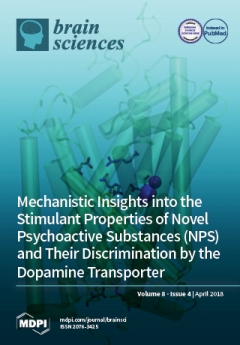Objective. To evaluate the efficacy of deep brain stimulation of the subthalamic nucleus (STN DBS) in patients with Parkinson disease (PD) who previously underwent lesioning of the basal ganglia.
Material and methods. The study included 22 patients who underwent STN DBS. Eleven patients had undergone prior unilateral pallidotomy (
n = 6) or VL/VIM thalamotomy (
n = 5) while the other 11 patients had not. The primary outcome was the change from baseline in the motor subscore of the Unified Parkinson Disease Rating Scale (UPDRS-III) 12 months after STN DBS. Secondary outcomes included change in motor response complications (UPDRS-IV) and change in levodopa equivalent daily dose (LEDD).
Results. In the group with prior lesioning UPDRS-III improved by 45%, from 51.5 ± 9.0% (range, 35–65) to 26.5 ± 8.4 (range, 21–50) (
p < 0.01) and UPDRS-IV by 75%, from 8.0 ± 2.01 (range, 5–11) to 2.1 ± 0.74 (range, 1–3) (
p < 0.01). In the group without prior lesioning UPDRS-III improved by 61%, from 74.2% ± 7.32 (range, 63–82) to 29.3 ± 5.99 (range, 20–42) (
p < 0.01) and UPDRS-IV by 77%, from 9.1 ± 2.46 (range, 5–12) to 2.0 ± 1.1 (range, 1–4) (
p < 0.01). Comparing the two groups (with and without lesioning) no significant differences were found either in UPDRS-III (
p > 0.05) or UPDRS-IV scores (
p > 0.05) at 12 months post-DBS. The LEDD was reduced by 51.4%, from 1008.2 ± 346.4 to 490.0 ± 194.3 in those with prior surgery (
p < 0.01) and by 55.0%, from 963.4 ± 96.2 to 433.3 ± 160.2 in those without (
p < 0.01).UPDRS-III improved by 51.8%, from 53.7 ± 4.6 (range, 50–62) to 25.0 ± 3.8 (range, 21–31) in those with prior pallidotomy (
p < 0.01), and by 37.5%, from 48.8 ± 12.6 (range, 35–65) to 29.8 ± 13.6 (range, 22–50) in those with prior thalamotomy (
p < 0.01). This numerical difference in improvement was not statistically significant (
p > 0.05).
Conclusion. Our comparative study indicates that bilateral STN DBS is effective and can be used in patients with Parkinson disease with prior unilateral stereotactic destructive operations on subcortical structures. The results in our patient cohort are generally consistent with previously published reports of smaller series from multiple centers worldwide.
Full article






